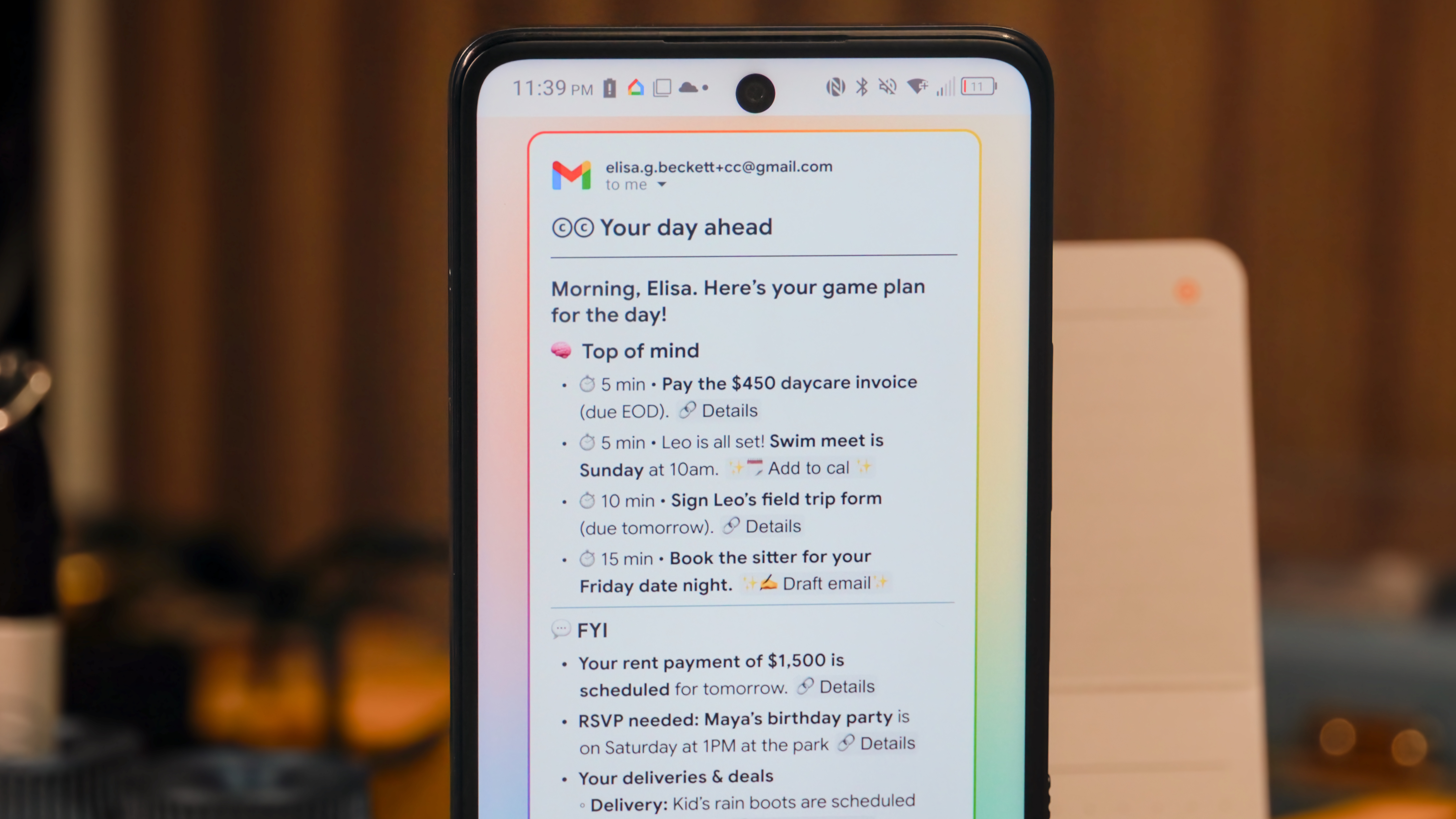Realme has transformed India's budget segment. Before it burst onto the scene last year, it was inconceivable that any other brand would be able to challenge Xiaomi in India. Realme has not only managed to do that, but it also amassed a sizable market share in the country, solidifying its position in the budget category.
With both Realme and Xiaomi trying to outdo one another, 2019 has been busier than usual when it comes to phone releases. Xiaomi has launched ten devices in the country this year alone, and Realme isn't far behind with seven. With so much choice in the budget segment, customers are spoilt for options. Just between Realme and Xiaomi, there are over a dozen devices that offer great value for money.
This year also saw 48MP cameras becoming a mainstay on budget phones, and the pace of innovation in this segment is such that we're already seeing the arrival of the 64MP sensor. The Realme XT has the distinction of being the first phone in India to offer the 64MP module, and it costs just ₹15,999 ($225). So let's see what the phone brings to the table and whether it can continue Realme's momentum in India's budget category.
The Good
- 64MP is a great addition
- Glass-backed gradient design
- Robust hardware with Snapdragon 712
- 20W fast charging over USB-C
- 3.5mm jack
The Bad
- Terrible macro lens
About this review
I am writing this review after using the Realme XT for two weeks in Hyderabad, India. The phone was connected to Jio's 4G network for the duration of the review, and was running ColorOS 6.0.1 out of the box.
Realme XT Hardware

The design of the Realme XT feels like an evolution of the Realme 3 Pro, with the phone offering the same hues for the gradient effect and similar curved lines etched underneath the glass. The one key difference is that the Realme XT has a glass back, a first for a Realme phone. It doesn't add too much weight — the XT is only 10g heavier than the 3 Pro — and gives the phone a much more premium look.
Get the latest news from Android Central, your trusted companion in the world of Android
Of course, switching to a glass back makes the Realme XT prone to smudges, and the glossy finish means there's a higher chance of the device taking a tumble. There is a layer of Gorilla Glass 5 at the back, and my unit came away unscathed after a few tumbles onto a tiled floor.
The Realme XT has more in common with the Realme 5 Pro than the Realme X.
While it's great that the device now comes with a glass back, Realme got rid of the retractable camera module and went with a waterdrop cutout at the front. The bottom bezel is thankfully thin, and you get a 3.5mm jack and USB-C port for charging the phone. There's a single speaker to the left of the USB-C port, the power button is to the right, and the volume rocker is on the left. The SIM card tray sits above the volume rocker, and you can slot in two SIM cards in addition to a MicroSD card. The overall build quality is predictably great, and the yellow accent for the power button adds a bit of flair on the side.
As you'd imagine for a phone with four rear cameras, the housing is very busy. The main 64MP shooter has a gold accent around the sensor and a 64MP label beneath it, with the other three sensors laid out vertically. There's another label just below the flash for the AI camera, and other than a Realme logo at the bottom, the back is devoid of any other markings.
Having used both the Pearl White and Pearl Blue variants of the device, I can say that the latter is the better option. I like the understated look of the white model, but the blue option has much more going for it.

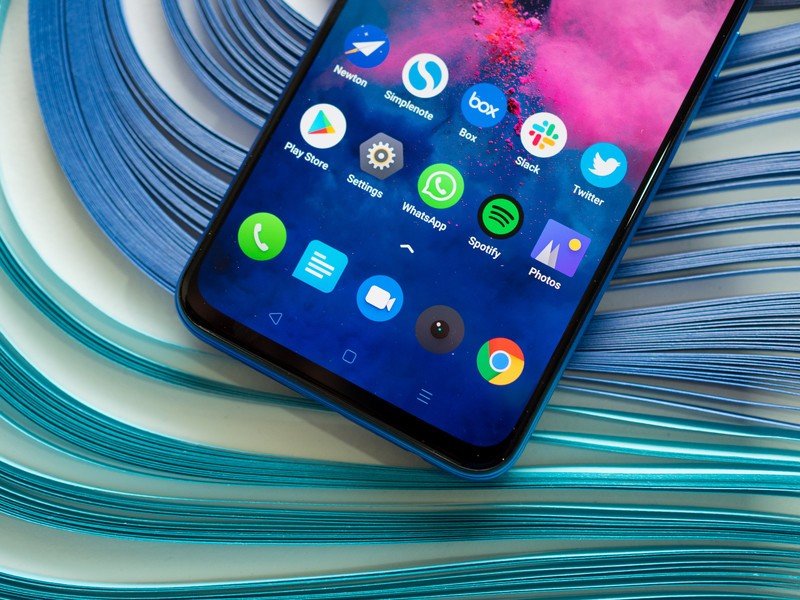
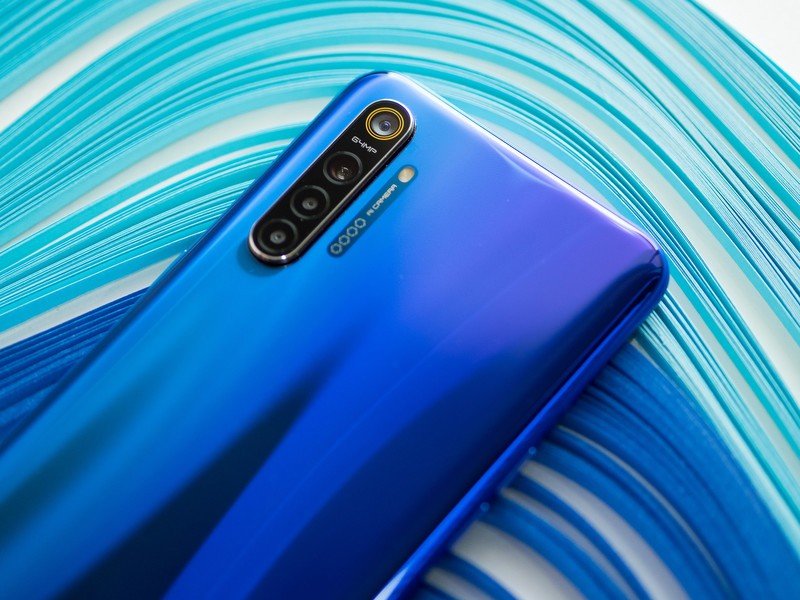




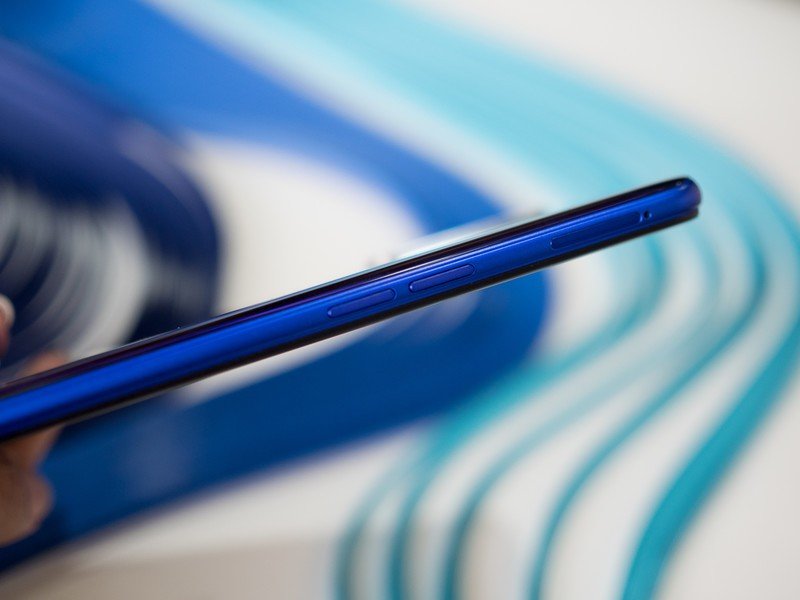
While the naming suggests the Realme XT is an updated variant of the Realme X, in reality the device has much more in common with the Realme 5 Pro. The phone shares the same cutout for the front camera module, the same Snapdragon 712 chipset, and the design of the rear camera array is identical. In fact, it has the same auxiliary sensors as the Realme 5 Pro, with an 8MP wide-angle shooter joined by a 2MP macro lens and a 2MP portait lens.
It's not immediately clear why Realme decided to market the phone under the X series, but it is possible the brand wanted to differentiate the fact that the XT is its first with a 64MP module.
Snapdragon 712 is a great option here, and you get a vibrant AMOLED panel.
As mentioned above, the Realme XT is on the same footing as the Realme 3 Pro when it comes to the hardware side of things. There's a Snapdragon 712 under the hood, and the phone is available in 4GB, 6GB and 8GB configurations with either 64GB or 128GB of internal storage. The storage module itself is UFS 2.1, a welcome addition. The Realme XT is tailored for Asian markets, and as such it has limited LTE bands. You get 1/3/5/7/8/20/28/38/40/41, and there's an LTE Category 6 modem that has download speeds of up to 300Mbps and an uploads of 75Mbps.
Realme's choice of an LTE modem was undoubtedly borne out of necessity, and this is a common enough occurrence in the budget segment. Brands have to cut costs somewhere, and with the phone unlikely to launch outside of Asia, it has limited LTE bands and modest download speeds. Of course, the state of LTE networks in India is such that you'll never cross over 75Mbps in day-to-day usage anyway, so it's a fair trade-off all things considered.
| Specs | Realme XT |
|---|---|
| Software | Android 9.0 Pie (ColorOS) |
| Display | 6.4-inch (2340x1080) Super AMOLED |
| Chipset | Snapdragon 712 |
| RAM | 4GB/6GB/8GB |
| Storage | 64GB/128GB |
| Rear Camera 1 | 64MP, ƒ/1.8 |
| Rear Camera 2 | 8MP, ƒ/2.2 |
| Rear Camera 3 | 2MP, ƒ/2.4 |
| Rear Camera 4 | 2MP, ƒ/2.4 |
| Front Camera | 16MP, ƒ/2.0 |
| Security | In-display fingerprint |
| Battery | 4000mAh, 20W |
| Connectivity | Wi-Fi 802.11 ac, BT5.0 |
| Colors | Pearl White, Pearl Blue |
| Dimensions | 158.7×75.1×8.5mm |
| Weight | 183g |
As for real-world performance, the Realme XT is about as fast as things get in this segment. The Snapdragon 712 is built on a 10nm node and has four Cortex A75 derivatives at 2.3GHz and four cores based on the Cortex A55 running at 1.7GHz.
The Adreno 616 is more than adequate for most games, but if you're looking to get the phone for battle royale titles like PUBG, know that you won't be able to max out the settings. If you game a lot, Realme is making a gaming-focused edition dubbed the Realme XT 730G that is powered by the Snapdragon 730G and 30W fast charging.
In real-world usage, the Realme XT was just as fluid as devices that cost two or three times as much. I never saw any lag, and we're at a point where budget phones are on an equal footing to "true" flagships when it comes to day-to-day performance.
Switching over to the display, the 6.4-inch FHD+ OLED panel is near-identical to the screen on the Realme X, and you get vibrant colors with deep blacks and excellent sunlight visibility. The glass at the front is also protected by a layer of Gorilla Glass 5, and you get the usual slate of customization options for the screen.
Like the Realme X, the Realme XT has an in-display fingerprint sensor. It is an optical module, and is identical to what you'll find elsewhere in this segment. I had no issues with the sensor in my usage; it authenticated my fingerprints unerringly and took under half a second to do so. The phone also has a face unlock feature that's significantly faster — if anything, it is just as fast as OnePlus' implementation.
There really isn't anything missing here, and you get a 4000mAh battery that lasts all day.
The Realme XT isn't missing out on core features: you get Wi-Fi ac, Bluetooth 5.0, a 3.5mm jack, and a MicroSD card that takes in 256GB cards. Then there's the 4000mAh battery with 20W VOOC fast charging. You get a 20W charger in the box, and it takes just over an hour and 20 minutes to fully charge the battery from zero to 100%.
The battery life is just as stellar as previous Realme devices. There wasn't a single instance where the Realme XT ran out of charge before the end of the day, and I got over a day's worth of use consistently. The 4000mAh battery is now a mainstay in India's budget segment, and the days of worrying about your phone's battery life running out are over. To round things off on the hardware front, it's great to see Realme offering USB-C charging for the XT.
Realme XT Camera
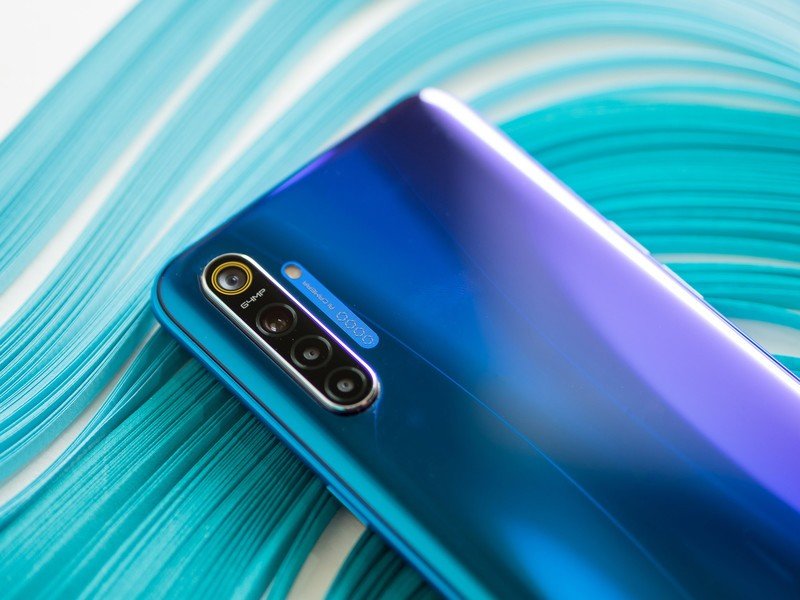
Value continues to be a core tenet for Realme, but a big reason for the brand's meteoric rise in India has to do with its camera prowess. Realme has consistently offered phones with stellar cameras, and that's particularly true for the Realme XT. The phone is the first to feature Samsung's 64MP GW1 sensor in India, with Realme managing to beat Xiaomi to market.
The 64MP camera is as good as the 2MP module is bad. And that 2MP macro lens is very bad.
Joining the main sensor are three other lenses: an 8MP f/2.2 wide-angle lens, 2MP f/2.4 macro lens, and a 2MP f/2.4 portrait shooter. While four cameras at the back makes for great marketing, you'll only ever use the main 64MP shooter and the 8MP module occasionally. The two 2MP sensors are next to useless, and the macro mode in particular just does not work, and in the few instances where you get an image that isn't blurry, the quality is so low that you wouldn't want to share it on social media. Realme should have gone with the traditional array at the back with a primary, wide-angle, and zoom lens instead of a macro lens.
The macro and portrait modes are hidden away in the camera interface anyway, so you can just ignore the two sensors and instead focus on the other two modules. The wide-angle sensor does a decent enough job, but it's easy to tell the difference in color balance ad dynamic range when switching over from the 64MP sensor. The primary shooter has EIS, but there's no OIS.
At the front you get a 16MP Sony IMX471 sensor. I don't take nearly enough selfies to care about the front camera, but the few times I used the front camera on the Realme XT it did a great job.

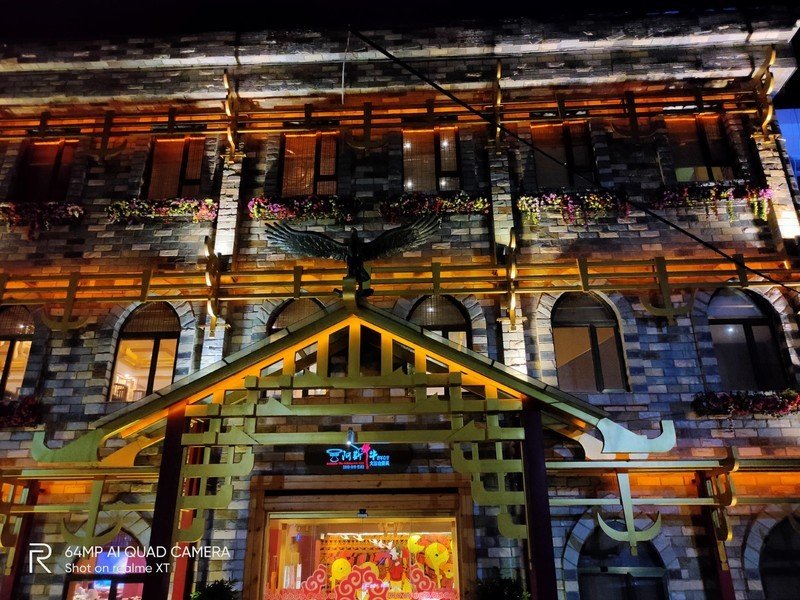

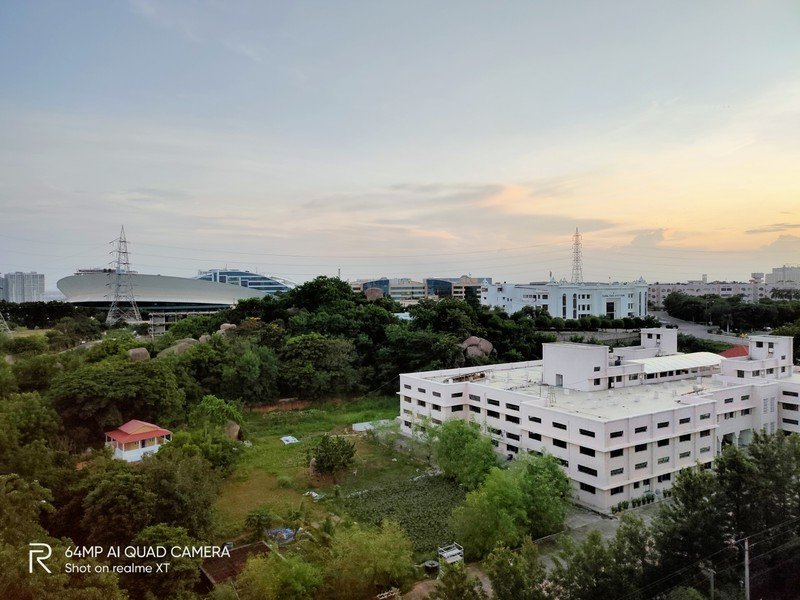



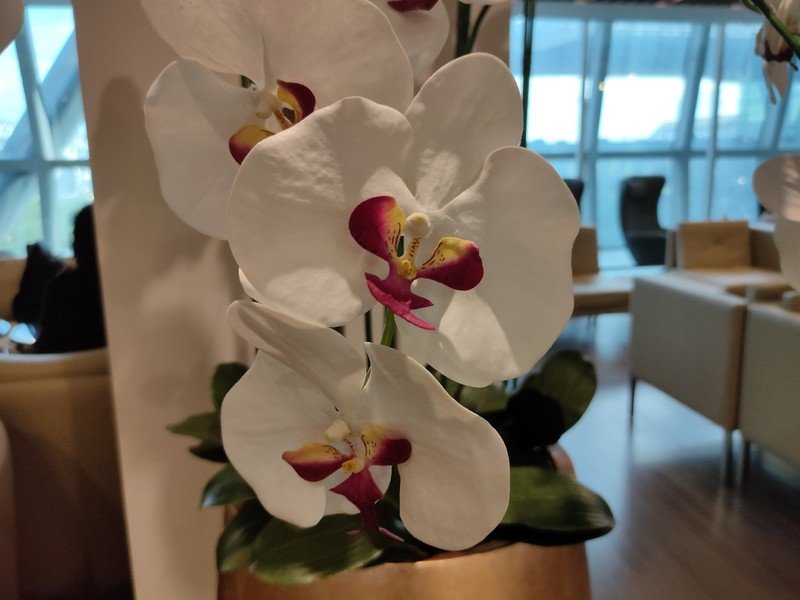

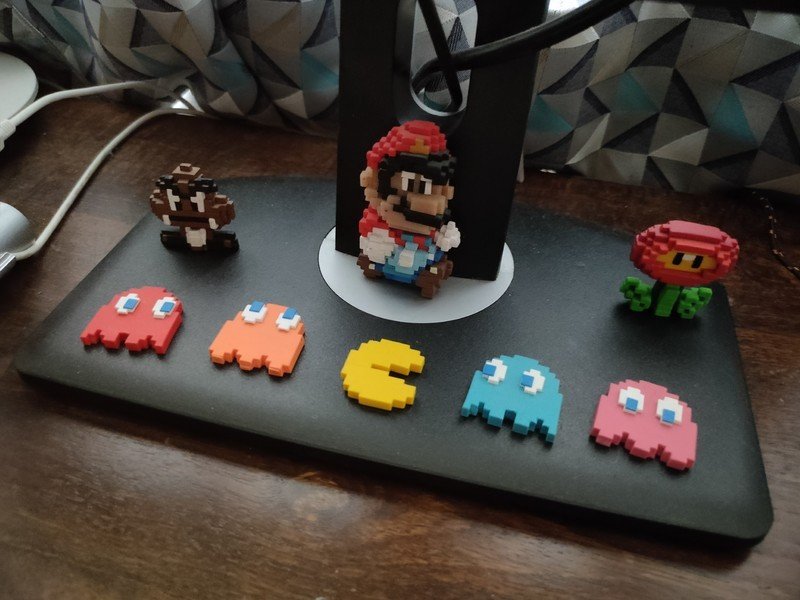
The Realme XT takes stunning photos in daylight scenarios, with wide dynamic range and accurate colors. Final photos tend to be slightly oversaturated — with Realme emulating Google's signature color profile — but they end up looking great, particularly on phones. You do notice inconsistencies when zooming in by 100%, with aggressive softening.
You get great shots at night as well, and while there's a lot of noise around the edges, colors don't look washed out. It is a great showing from the GW1 sensor, and I'm looking forward to seeing what other brands make of it. Overall, the camera isn't as good as the Pixel 3a, but it doesn't need to be. It just needs to be better than other phones in this segment, and Realme managed to do just that.
Realme XT Software
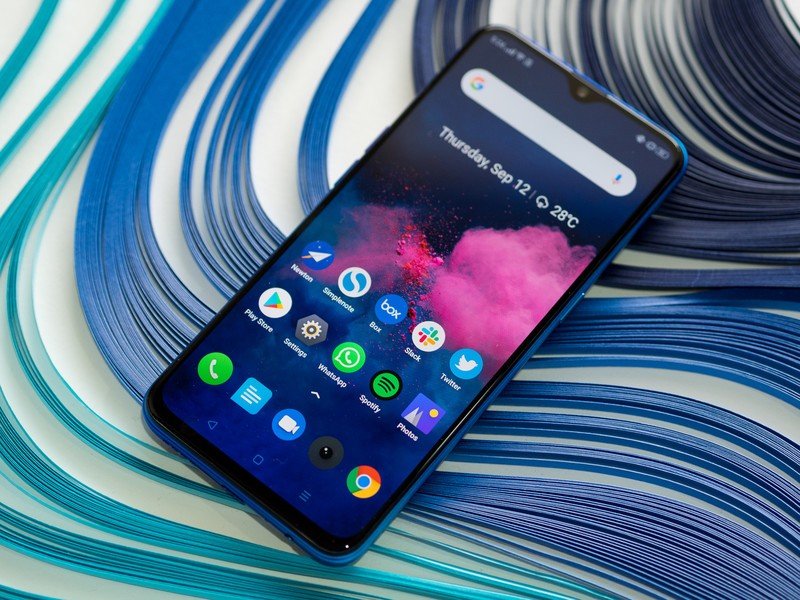
There's precious little to talk about on the software front. The Realme XT runs ColorOS 6.0.1 based on Android 9.0 Pie out of the box, and the interface itself is largely unchanged from the Realme 3 Pro. The toggles in the notification pane have picked up new icons, but if you've used a Realme device in the past, you'll be immediately familiar with what's on offer.
Realme continues to make useful changes to ColorOS, such as a system-wide dark mode.
There's a whole host of customization options available on ColorOS. You get an app drawer and ability to run two instances of an app, and you can even customize system fonts. Digital Wellbeing is included as well, giving you useful tools to set limits for specific apps and curb your phone addiction.
Realme is rolling out a system-wide dark theme that not only switches out the color scheme of the interface, but also the stock apps. The XT also comes with a newer version of game boost that limits background activity and ensures the hardware isn't throttled while gaming.
For all of the advances Realme has made so far, software updates are still an unknown for Realme. The brand has committed to delivering updates on time, and it is encouraging that one of its devices was on the Android beta program. But you'll have to wait at least until Q1 2020 to get the Android 10 update.
Realme XT Bottom line
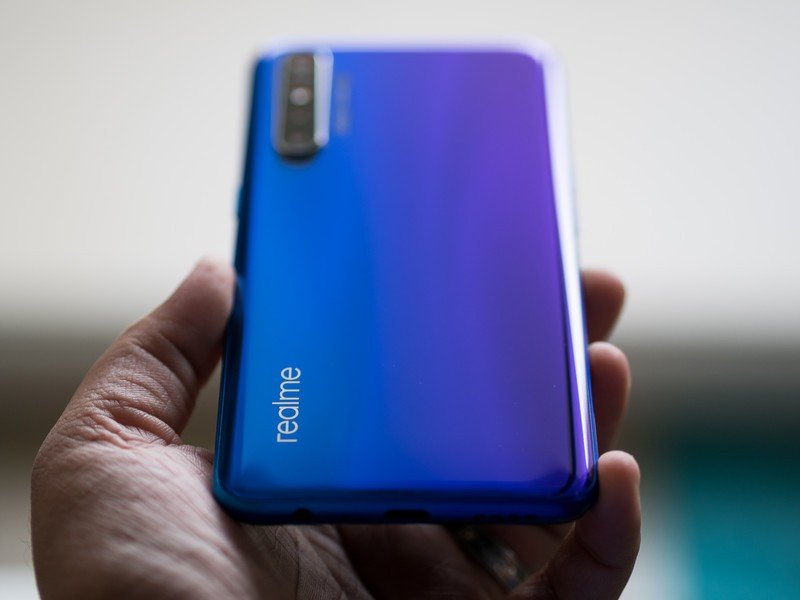
Realme has shown over the course of the year that it can hold its own in this segment. After all, the brand is backed by BBK, and it can go head-to-head with the likes of Xiaomi without having to worry about the bottom line too much. And that in turn means a wider variety of phones that offer great value for money.
The Realme XT is a fantastic device that gets the basics right. The design is an evolution over what we've seen from Realme in the past, and that 64MP camera is a clear differentiator for the brand. You also get a vibrant OLED screen, great internal hardware that will chug along just fine for a few years, and a 4000mAh battery that won't run out before the end of the day.
Overall, the Realme XT has the potential to be one of the best mid-range phones in India as we head into the tail end of 2019. The phone is going on sale in the country for ₹15,999 ($225) for the variant with 4GB of RAM and 64GB of storage, with the 6GB/64GB model set to retail at ₹16,999 ($240). The 8GB/128GB model costs just ₹18,999 ($265). That's fantastic considering the hardware on offer, making the Realme XT the phone to beat in this segment when it comes to value.
4.5 out of 5
With the Realme XT, the brand is taking a bold stance in the mid-range category. By beating Xiaomi to market with the first 64MP phone, Realme essentially has a monopoly on the sensor in India. That's ironic when you consider it was Xiaomi that worked with Samsung over the GW1 module. Xiaomi is selling a decent number of Redmi Note 8 Pro units in China, but Realme has the lead in India for at least a few months.

Harish Jonnalagadda is Android Central's Senior Editor overseeing mobile coverage. In his current role, he leads the site's coverage of Chinese phone brands, networking products, and AV gear. He has been testing phones for over a decade, and has extensive experience in mobile hardware and the global semiconductor industry. Contact him on Twitter at @chunkynerd.

